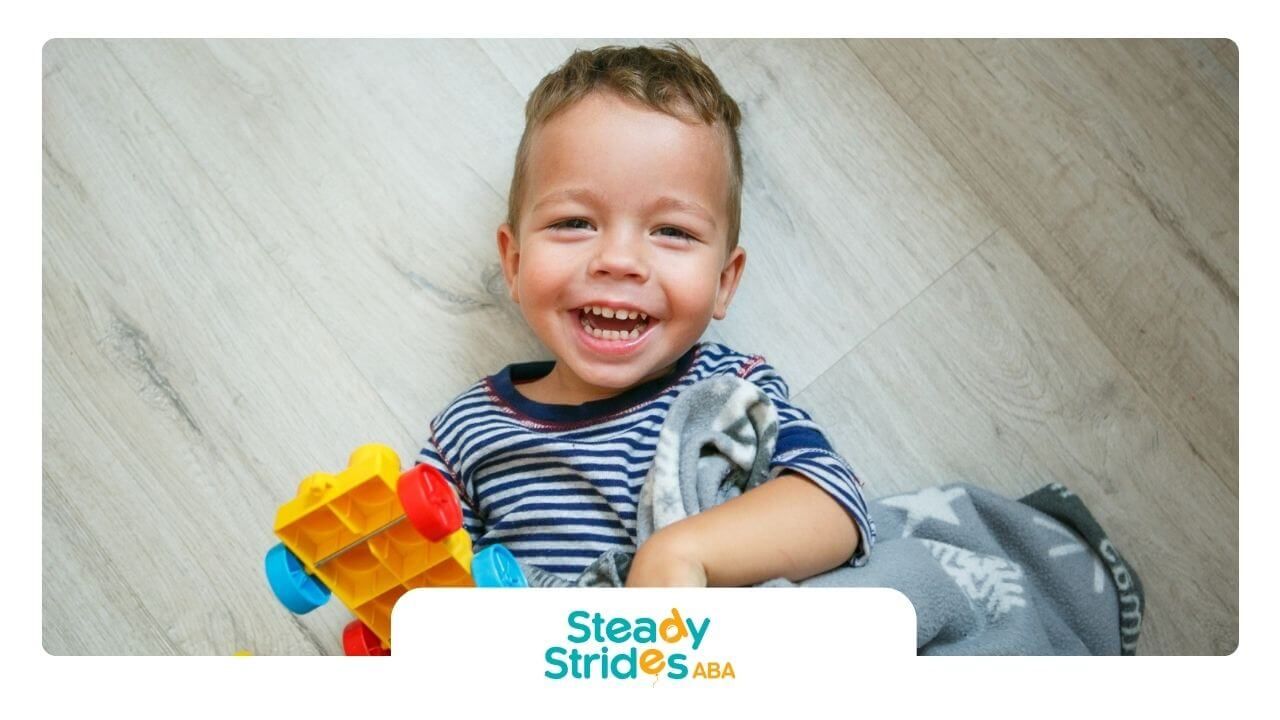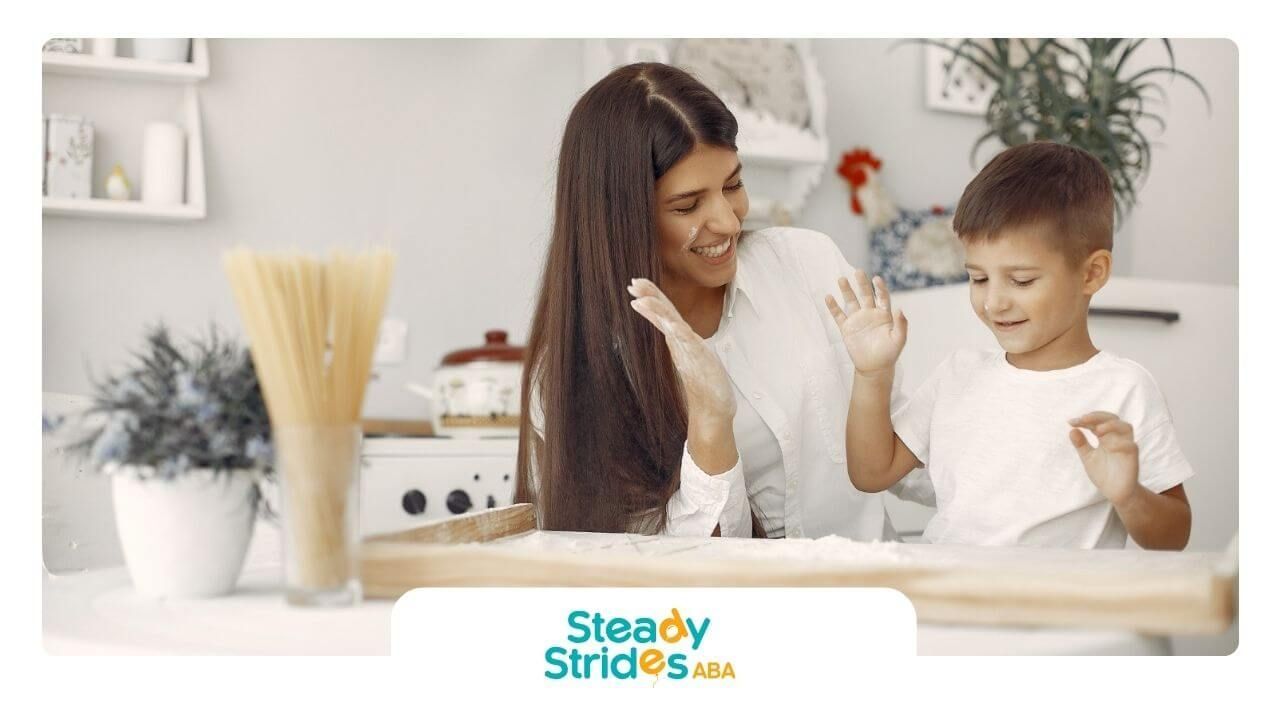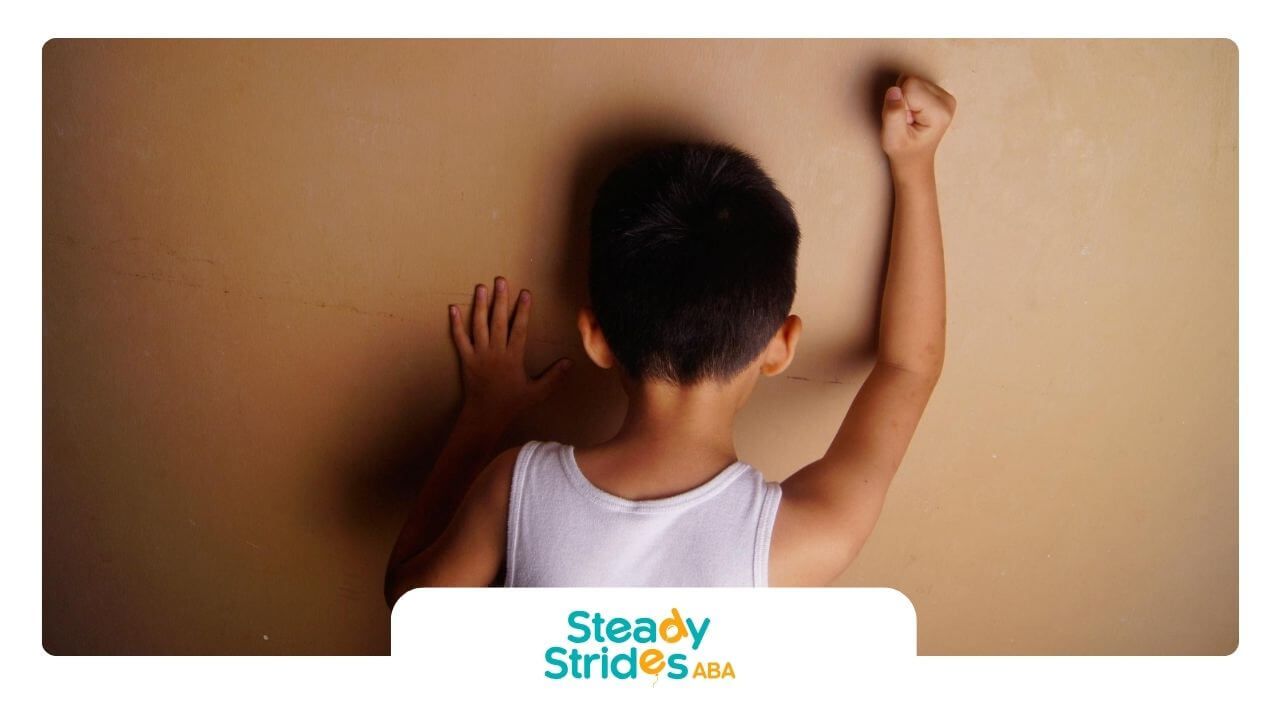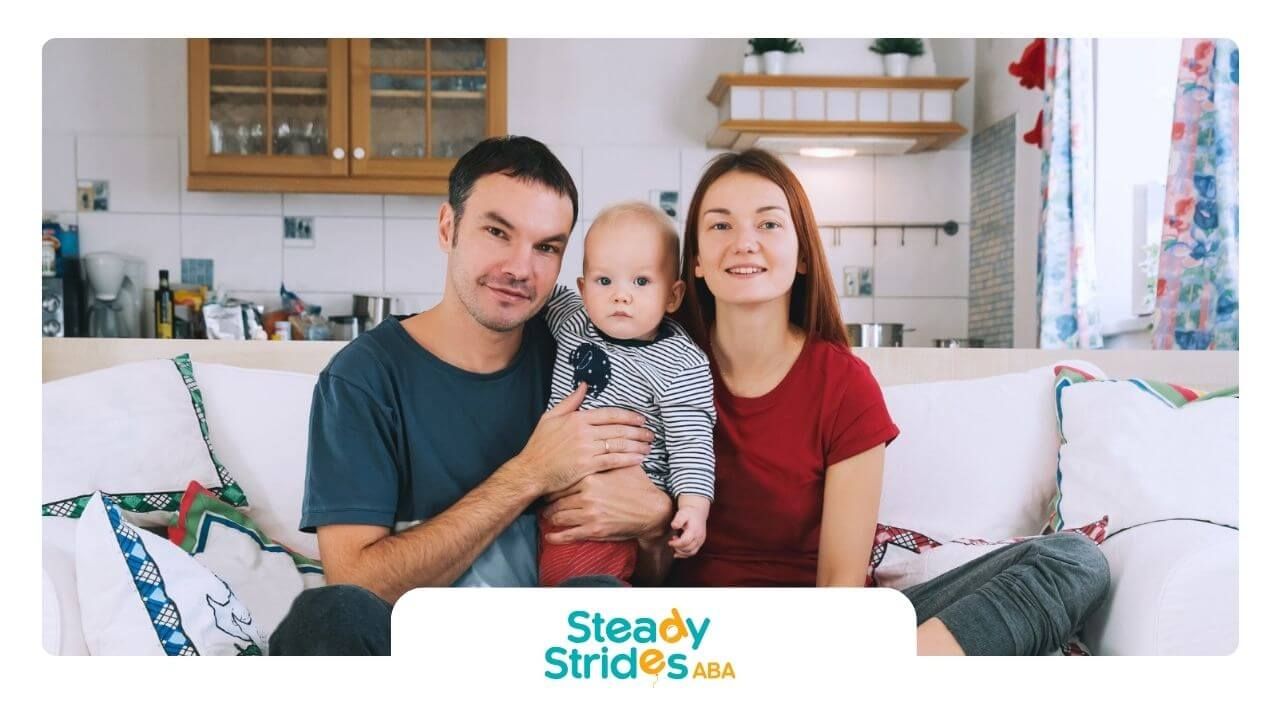Key Highlights
- Special beds for autistic children prioritize sensory needs, safety, and comfort, ensuring better sleep quality.
- Enclosed pod beds and adjustable safety beds provide secure sleeping environments that promote peace of mind for parents.
- Multi-functional beds combine storage solutions with thoughtful, safe designs tailored for special needs families.
- Innovative options, such as motion-regulating smart beds and customizable LED light beds, help address restless sleep and create calming spaces.
- Organic material mattresses cater to chemical sensitivity, while soundproof sleeping pods minimize sensory overload for autism spectrum children.
Finding the perfect bed for kids with autism goes beyond comfort—it's about creating a secure, sensory-friendly environment that promotes restful sleep and peace of mind. The right bed can transform bedtime struggles into calm, safe nights for your child.
I used to deliver home-based ABA therapy in Texas for a boy who had difficulty settling due to sensory overload. After switching to an enclosed pod bed designed for his needs, both he and his parents finally found peace at night.
Let’s explore the top 10 beds that combine safety and comfort for autistic children.
Top 10 Beds for Kids with Autism: Ensuring Safety and Comfort
When you pick beds for autistic children, it is important to think about safety and comfort for the senses first. The quality of sleep can help a lot with how they feel both in body and mind.
Here are the ten best choices that meet these needs and help families get peace of mind.
1. Enclosed Pod Beds for Sensory Security
Enclosed pod beds give a snug place for children who do well in sleep spaces that feel closed in. With canopies and soft, breathable covers, these beds help meet the sensory needs of kids by blocking out many things that might distract them. The pod-like shape helps autistic children feel safe, giving both parents and caregivers peace of mind.
These beds use strong materials to make sure children stay safe. A child can roll, move, or fidget in bed, and they will still be protected. The gentle walls help stop injuries and make it easier for kids to relax.
Some beds have clear panels you can look through, so it is simple for people to check on the child. This feature gives the beds extra points for being good at safety and easy to use.
Pod beds often use canopies that keep out too much light and noise. These things are often why autistic children have trouble getting to sleep. With a pod bed, a child gets both comfort and the sensory security they need. This is a good way to give autistic children a better night's rest and bring peace of mind to families.
2. Adjustable Safety Beds with Protective Rails
Adjustable safety beds are made just for children with autism and special needs. These beds have features you can change, making them safer and more comfortable. The beds come with protective rails and secure enclosures, so kids do not fall out. This helps give peace of mind to parents and helps everyone get better sleep.
These beds use strong and tough materials. They stand up to the way children move at night, like with stimming. The lockable enclosures and padded walls help keep restless kids safe. Caregivers can raise or lower the head or foot areas for children who have trouble breathing or feel uncomfortable, making sure they have a better way to sleep.
The beds with secure enclosures can be changed if a child's needs change. Whether kids need help with breathing or want more sensory touch, these beds can do both. Adjustable safety beds bring together good design and long-lasting durability. They are a great choice for special needs families who want comfort, better sleep, and safety for their kids.
3. Multi-Functional Beds with Storage and Safe Design
For parents who want both safety and useful features, beds made for special needs children are a smart pick. These beds have storage built in. Families can keep bedding or sensory things close, which helps the room stay neat.
These beds have more than just storage. The beds focus on a safe build. They often have padded sides and soft covers. This design helps make sure that children stay safe while they sleep. These beds are great if you want to make a calming space for your child. The strong bed frame works for smaller kids and for those growing into their teen years.
You also get trundle beds or drawers with some of these beds. This gives every child space to sleep, play, or read. These flexible bed designs are perfect if you need a safe and space-saving bed for an autistic child. These beds help keep the bedroom clutter-free and safe for them.
4. Low-Stimulation Bunk Beds to Minimize Sensory Overload
Low-stimulation bunk beds are great for families who have more than one child. They are especially good if you have autistic children who get too much input from sights and sounds. These beds use calm colors and simple shapes. This helps cut down on things that may distract your child and gives them a space that does not have too much going on.
The bed is close to the floor. This makes it safer, and the lower bed is easy for autistic children to get in and out of. Families can put up railings and use soft padding. These help keep your child safe and give parents more peace of mind. Because the beds are simple, they keep bright colors or messy designs away. That can help stop things that would mess up sleep.
Low-stimulation bunk beds focus on use and change as your child grows. The bed can fit the child’s needs at different times while growing up. It mixes safety and a plain style. This makes a quiet space where autistic children get better sleep and have good sleep quality. Families can get better rest and feel more at ease with these kinds of bunk beds.
5. Water Beds with Temperature Control for Comfort
Water beds with temperature control can help autistic children who are sensitive to temperature changes. Unlike other mattresses, these beds spread out the weight of the body well. This can lower pressure points and help people sleep better at night.
One of the best things about these beds is their temperature control. Parents can make the bed warm or cool so their child is not upset by weather changes. This control can help improve sleep quality, which is very helpful for autistic children who may need daily routines to stay sound in their senses.
These water beds use soft and strong materials like memory foam to add more comfort and safety. Their design gives steady support to the body and takes away worries about getting too hot or cold at night. With sensory-friendly features and the ability to fit many needs, these beds help kids who have trouble with temperature feel more rested.
6. Soundproof Sleeping Pods for Quiet Rest
Soundproof sleeping pods help children on the autism spectrum who find noise upsetting. These pods create a quiet space by blocking the sounds of traffic and home life. This gives peace of mind to families because their kids can rest with less trouble from outside noise.
The pod comes with soft, padded walls that keep sound out and also protect kids who move a lot at night. These walls keep them safe if they roll or stim while they sleep. The closed shape also stops bright lights and the busy feel of the house from reaching inside.
Parents can put calming sounds, like soft music or a white noise machine, in the pod. When noise is less of a problem, autistic children get a steady, peaceful place where they can sleep well every night. The sleeping pod helps them feel good, letting them wake up ready for the new day.
7. Organic Material Mattresses for Chemical Sensitivity
For families who need hypoallergenic options, organic material mattresses are a great choice. They are made with certified organic cotton or latex and have good airflow. These materials help lower exposure to things that can bother your skin or senses. This is very helpful for people with sensory needs and anyone who is sensitive to certain chemicals.
These mattresses are built to be hypoallergenic, so they help keep children with allergies or asthma safe at night. They are strong and built for durability, which means you can clean them often and still have them last. This helps keep things clean and also deals with worries about chemical sensitivity. When you use them with safety beds, organic mattresses add more comfort and protection.
They also provide even support while sleeping. This helps with sensory regulation. Organic mattresses improve air flow, which is important in bedrooms. This is good for sensory needs and helps autistic children feel secure and calm. With all of these benefits, kids get better sleep and can start calmer night routines.
8. Customizable LED Light Beds for Calming Effects
Customizable LED light beds change sleep routines for children with autism. They let you pick the brightness and colors to fit emotional and sensory needs. These beds can help make a calming space, which is good for better sleep.
For example, you can use warm colors or dim the lights to help children relax at bedtime. This lowers sensory worries and gives kids a calming space to unwind. Remote controls make things easy, so caregivers can adjust settings right away, the way their child likes.
These beds also come with strong frames and safe railings to add safety features. Customizable LED beds give special needs families a way to combine comfort, safety, and new ideas for better sleep. They are meant for kids with special needs, and focus on both safety and sleep quality at bedtime.
9. Motion-Regulating Smart Beds for Restless Sleepers
Motion-regulating smart beds use new technology to help kids who move a lot in their sleep. The beds have sensors that watch how the child sleeps. When the child moves, the bed changes itself right away to stay comfortable.
These smart beds are good for children with autism. Many of these kids have stiff joints or feel everything more on their skin, so a bed with smooth, slow movement helps a lot. It helps with sleep quality and stops the child from waking up at night. Parents can also use an app to see how their child moves during the night. This gives people peace of mind and makes it easier to care for their child.
These beds work for kids who sleep in lots of different ways, too. They change how they support the body during sleep, so children feel good and safe. With these new beds, bedtime for kids with autism can be more calm, safe, and better for their feelings and sleep.
10. Soft-Walled Pillow Beds for Cozy Boundaries
Soft-walled pillow beds are great for making small, cozy areas that help kids feel safe and comfortable. With padded walls and soft materials, these beds lower the risk of injury from rolling or bumping, which is good for children who have sensory sensitivity.
The thick and soft materials make nice boundaries. This means the bed can feel snug and good to be in, and that is important for autistic children who might need more comfort at night. The closed-in design helps lower stress. This allows kids to relax, so they can get better sleep and feel more at ease.
Pillow beds are also light and easy to carry. Families can take them from room to room or even while traveling. The safety, simple use, and soft materials all work together. This makes these beds a smart choice for anyone who wants a strong but calming place for children to sleep.
Conclusion
To sum up, picking the right bed for kids with autism is important for safety and comfort. Each of the top 10 beds we talked about has its own features. These beds are made to help with sensory needs and to stop sensory overload. When you choose a good bed, you help your child sleep well and improve their well-being.
If you're ready to help your child experience safer, more comfortable sleep with expert ABA therapy support, Steady Strides ABA is here for you. Our compassionate team understands the unique needs of children with autism and offers personalized therapy plans that complement sensory-friendly environments, including guidance on creating the ideal sleep space.
Contact Steady Strides ABA today for a free consultation and take the first step toward better nights and brighter days for your family.
Frequently Asked Questions
What materials are best for beds catering to autistic children?
Organic materials like certified cotton or latex that is safe for those with allergies can be good choices for kids with autism. These materials are soft and last a long time. They help with safe designs by bringing down chemical sensitivity and things that can cause allergies. When these are used along with padded surfaces, they help meet sensory needs. They make sure sleeping spots stay comfy for special needs families and for anyone with sensory needs or autism.
How does bed design affect sleep quality in autistic kids?
Beds that are made with care and have secure enclosures and sensory details can really help improve sleep quality for autistic children. When you use designs that focus on sensory needs and create a calm space, kids have less anxiety at sleep time. These setups make them feel safer and more comfortable, leading to better physical and emotional well-being.
Are there beds that can grow with my child?
Yes, there are adjustable beds that, with changeable heights and designs, can grow as your child grows. Bunk beds and other handy options are made to last a long time. So, these beds are good for families who want a smart and useful choice for kids with autism or special needs.
Sources:
- https://skywardmedical.com/collections/pediatric-safety-beds
- https://www.autismspeaks.org/sensory-issues
- https://www.autism.org.uk/advice-and-guidance/topics/sensory-differences/sensory-differences
- https://pmc.ncbi.nlm.nih.gov/articles/PMC3086654/
- https://pmc.ncbi.nlm.nih.gov/articles/PMC9441466/
- https://pmc.ncbi.nlm.nih.gov/articles/PMC5181622/
- https://www.hra.nhs.uk/planning-and-improving-research/application-summaries/research-summaries/the-safebed-study/













